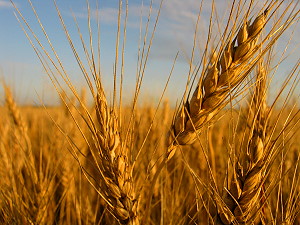 Northwest Region Crop Report Prepared by: Manitoba Agriculture
Northwest Region Crop Report Prepared by: Manitoba Agriculture
September 21, 2021 |
Northwest Region
Minimal to no precipitation this week allowed harvest to progress nicely across the Northwest Region. High temperatures along with strong winds over the weekend also helped crop dry down, however strong winds cause some canola swaths to blow over. With another week of no precipitation, soil moisture and water sources continue to be depleted. Some post-harvest fieldwork has been done following harvest but most are holding off due to dry conditions.
Spring cereals are 98% complete with some wheat and oats still standing. Spring cereals in The Pas are approximately 80% harvested with yields of 65 to 70 bu/acre. Yields in the rest of the region are lower, from 40 to 70 bu/acre.
Canola harvest continues across the region and nearing completion in the southern areas. Harvest progress is about 65% complete in The Pas with yields so far at 25 to 30 bu/ac in poorer fields and 45 bu/ac in better stands; harvest progress in the rest of the region is about 90% complete. Yields in the Swan Valley in poorer crops are approximately 15-25 bu/ac and better crops yielding 45 to 50 bu/ac; yields in Roblin approximately 35 bu/ac and Dauphin at 25 bu/ac and up to 55 bu/ac in better fields. Fields that remain standing are those that were later seeded/germinated or reseeded and/or experienced extra stress and are not quite ready to be harvested.
Soybeans are mostly in the R8 stage with some fields slightly behind. Harvest has begun in the Dauphin area and crops are still standing in the rest of the region for now. Flax is bolled out and continuing to maturity and remains standing at this point. Fababeans are also standing and continuing to maturity.
Pastures remain in good condition with herds still out grazing. Producers are still waiting for a killing frost to make a second cut of alfalfa, either mechanically or with grazing. Corn silage harvest is underway with variable yields being reported from 11 to 18 tonnes/acre. Producers continue to haul in bales and are actively sourcing feed to carry their herds through the winter months. More moisture is needed to replenish water supply levels for next year.
